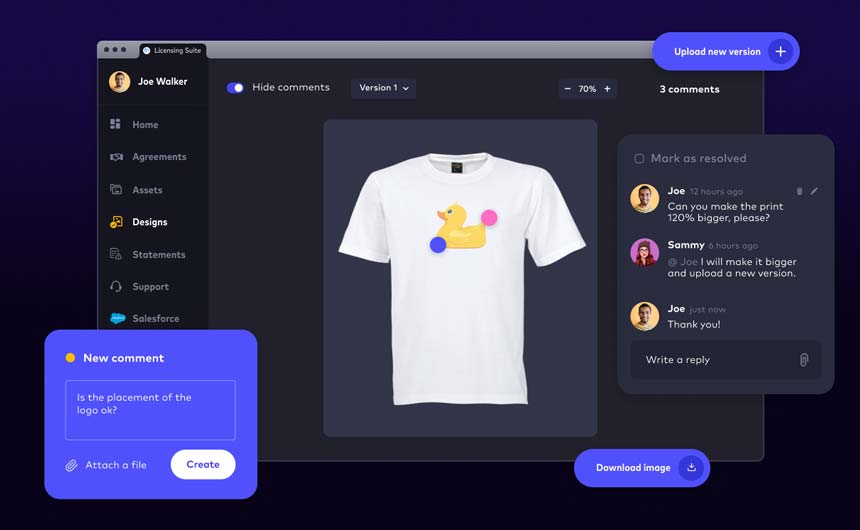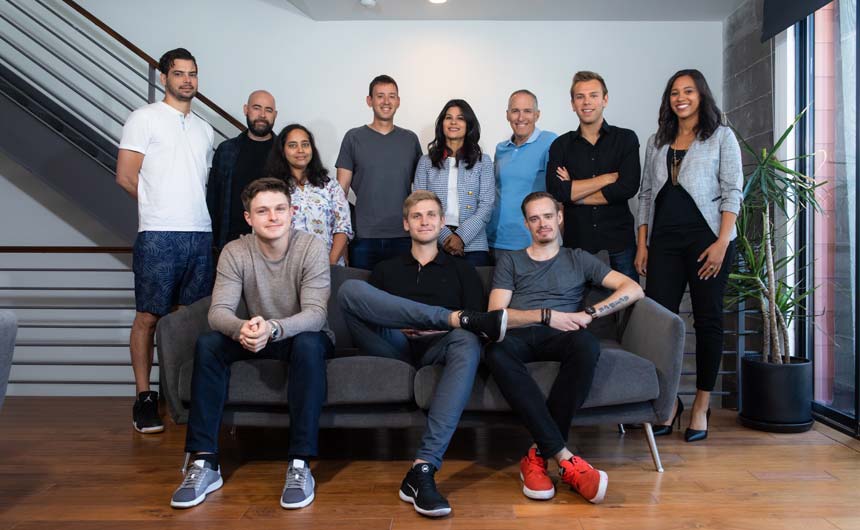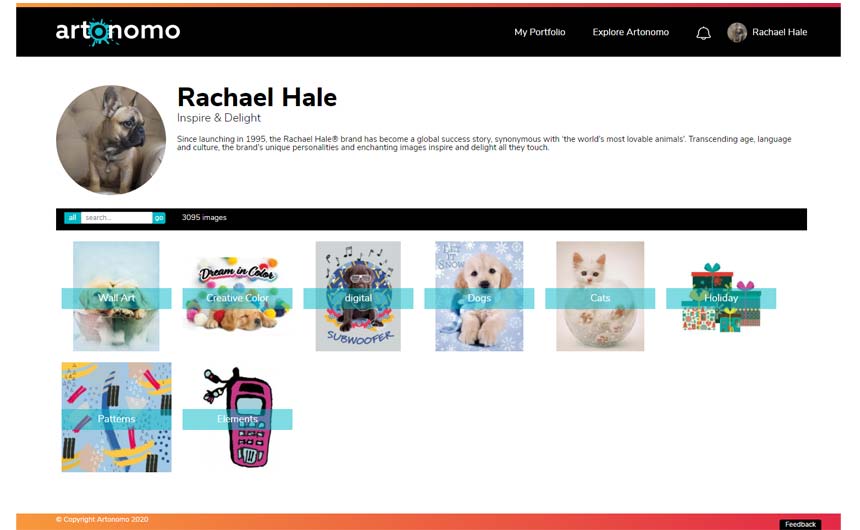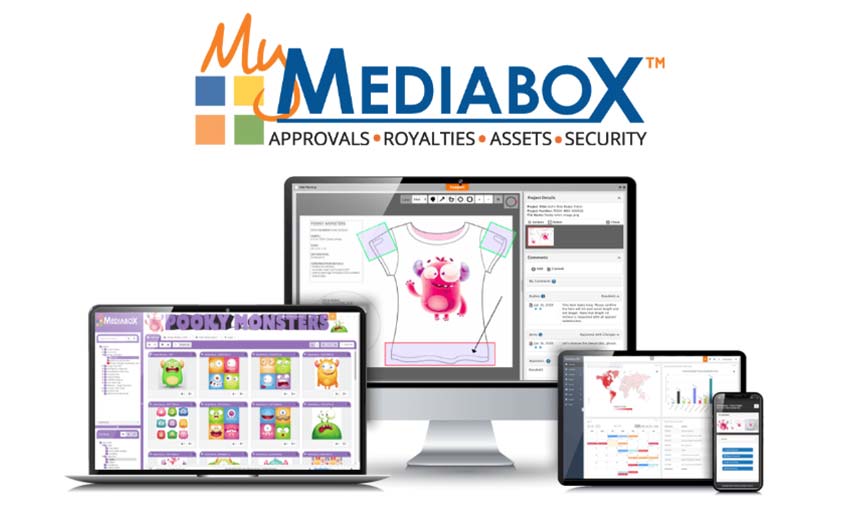The next time (hopefully soon) you casually idle up the aisles of a licensing trade show, expect to hear the occasional chirping of TLAs (Three Letter Acronyms).
Whether it be ‘Permission Based Access’ or ‘Highly Customisable Workflow’ these IRAs (Instantly Recognisable Emphasisers) are the mating call of the newest inhabitants of the licensing community, the software salesmen, they are italicised below in case you are looking out for any new acronyms to add to your vocabulary.
Adam Bass of Golden Goose, takes a scenic tour of this new neighbourhood…
Generally speaking at Golden Goose we usually work with what you might call, slow brands. These are big 30+ year old properties that licence into categories with the aim of staying there for as long as possible. When you first start licensing out a slow brand, the licensing process is ‘relatively’ straightforward.
The simplified version goes something like this: Find yourself some potential licensees, work with them to develop proposals which go back and forth until, hopefully, a contract is issued and finalised. With the contract comes product development: access to brand assets, submission/marking up/resubmission of prototypes until, hopefully, everyone (including retailers and consumers) is happy with the product. Then, every quarter your new licensee sends you a royalty report detailing where the new product has been sold and, very hopefully, how much they owe you. Accounts then issue an invoice and voila!
Now take this one simplified version of events and multiply it by 25, add multiple versions of the brand, multiple stakeholders needed to approve the product, multiple variations of the standard agreement, multiple territories and multiple sub-agents and aaaaaah!
Yes, welcome to fast licensing. Once your licensing programme reaches this scale, managing it with a shared folder in the Cloud and Microsoft Office 365 just won’t cut it any more, at this stage you need instant access to data, you need approvals to be tracked and traceable, you need licensees to upload royalty reports not be sending them in via email… in short, you need software.
To help you make your mind up about which software solution is right for you, I’ve taken a whistlestop tour of the major players in the market. This isn’t a software review article, I’m basically assuming that these companies can all deliver what you need to a certain extent, it’s more about giving you a sense of where they’re coming from, where they’re going and their overall culture.
With that in mind, jump on board for your tour of the available options.

Flowhaven
Like many globally available software solutions, Flowhaven was born out of an individual’s need to manage their ever-increasing workload. As a licensing specialist at Rovio, creator of Angry Birds, Kalle Törmä, saw the gaming company’s licensing programme grow from a small operation to a global phenomenon with international manufacturers throwing themselves at the brand owner for the chance to take the licence.
Working in an innovative tech company made it inevitable that Kalle would solve the inefficiencies he witnessed during the rapid implementation of an international licensing program with specialised tech. In the absence of a digital, easy-to-access service to his liking Flowhaven, “a Licensing Relationship Management Solution built to improve workflows”, was born. Today the company is, they say, the world’s leading LRM.
Flowhaven is built on Salesforce’s software architecture and boasts proprietary technology and customisable modules tailor-made for licensing professionals. If you’ve just glazed over, this essentially means that it uses the core database of Salesforce (the world’s leading customer relationship management software) to manage all of the processes licensing requires, with some extra bits of custom made tech.
With a team of 30+ people stationed in Helsinki, London and Los Angeles and more, working for 40-50 customers, its sweet spot is larger licensing programmes, typically with teams of five people working on the programme, but it services customers of all sizes from two-person teams to large enterprises.
The pricing model works on a cost per internal user basis of £300 per user per month for a year’s usage with unlimited external users. There is also the flexibility to licence the software for less than a year at a premium.
Pros – CTO will approve of Salesforce, simple pricing model.
Cons – tied to Salesforce Development which may mean they take you down the CRM route.

Brand Comply by Octane 5
Why is it that these software companies have such high-powered names? BrandComply Fueled by Octane5 sounds like weapons belonging to the Terminator. Anyway, if you can get past the Schwarzenegger style naming strategy, you’ll find a solution that was started by Mike and Matt Dunn.
Their history in software goes back to the ‘90s when they were managing digital assets for US sports leagues. After years of shipping discs around the world, they developed the first online digital asset tool for sports licensing. It morphed into product approvals, security holograms, until the concept of a fully integrated licensing solution was born. Today, in addition to those core functions, BrandComply incorporates a veritable Swiss Army knife of functionality like rights management, forecasting, compliance, royalties and, of course, much much more.
The sales team is headed by a former licensing professional – in this case Denise Penn who was a senior licensing manager at ITV before crossing over to the other side and working for Dependable Solutions (see below) and now Octane5 for the past five years. Unlike other tech solutions, many of her teammates also joined Octane5 from major brands so licensing knowledge permeates the offices – and the software.
Octane 5 is probably best suited to licensing programmes that encompass more than 20 licensees. In addition to the software, the ultimate solution offered by Octane5 is a security product called THREADS™ that incorporates a QR code for Interactive Digital Authentication and Intelligent Consumer Engagement. When consumers scan the code they are encouraged to register their information in exchange for online discounts, games, prizes and other various incentives. When a consumer from a territory outside the licensing agreement scans the QR code, a flag within the BrandComply software is triggered, so that ‘interesting’ conversations can then be had between the licensor and the transgressing licensee It’s clever tech like this that keeps clients such as Ford, Coca Cola, Formula 1 and Harley-Davidson happy.
Unlike a lot of solutions, Brand Comply doesn’t charge per user, instead it charges by licensee. Fees are competitive for such a robust solution, but suggest if you’re not generating close to $500k in total royalties, you may have to consider other options which is a shame because the bells & whistles of BrandComply sound almost as exciting as the software’s terminator style name.
Pros – interesting tech and end to end solution, great solution for compliance, experienced team.
Cons – best for established programmes.

Dependable Rights Ltd UK/ Dependable Solutions Inc
When it comes to charismatic American ceos, Marty Malysz would probably take some beating. Marty came into the licensing software market having worked in the music industry where he was involved in managing royalty payments to music labels, musicians, producers and various other malingerers. He has the immediate likeability of someone who can regale you with stories of meeting your favourite musicians (Bob Dylan, Neil Diamond and Gloria Estefan) and he has clearly retained his love of the music business.
This background in complicated contract management and royalty payments is the root of the solution. 15 years of experience suggest a well founded business with 37 people working across four continents for 70 clients. This makes it well suited for complex licensing programmes with multiple agents, property and various royalty models. DSI even handles approvals and digital assets which tie into contract rights and financial processes and plug into actual trademark registraries, making a Full Suite Enterprise offering.
Having worked with licensing people for some time, Marty is clearly open to negotiations, whether it be a pricing structure that can range from $1,000 to $8,000 per month based on the size of the licensing operation or adding other bells and whistles. The pricing structure depends on how many users have simultaneous access to the system, as well as the number of remote users.
Pros – contracts and royalty management a strength, flexible pricing.
Cons – still $1,000 per month, payable per simultaneous login.

Brainbase
Anyone who attended the first digital licensing expo may remember the ‘strong encouragement’ to engage with Brainbase by Nate Cavanaugh, the 24 year old ceo. This powerful speech may have revealed a degree of frustration with licensing people’s reluctance to engage with technology. As someone who ran a successful online esports platform, Nate is a silicon-valley success story who has identified the IP space as his next project and has raised $12M to spend.
With a start-up mindset, Brainbase looks set to keep developing software solutions until it finds the killer app, and the dashboard and user interface certainly looked as though it has been built for the Cloud, rather than adapted for it.
Rather than separate modules for Digital Asset Management, Approvals, and Contract Management, Brainbase integrates everything offering a Total Integrated Solution and has a roadmap to help manage the entire licensing process end-to-end. While it’s unlikely that your typical licensing agent could be replaced by a piece of software, Brainbase is undoubtedly zeroing in on any element of licensing that can be made easier and friction-free.
With a subscription pricing based on annual revenue and even a ‘free’ offering for start-ups generating less than $100,000, Brainbase has a range of options. Where the agent is paying for the software they will even factor in the commission rather than the total royalty generated.
Pros – flexible pricing structure, aggressive start-up mentality, young ceo.
Cons – perhaps some risk, might be led in a particular direction by a very big client, could eventually replace licensing agents!

Artonomo
If you don’t want to pay $1,000+ a month for the rest of your business career, then one solution might be developing your own licensing software. According to the ceo of Jewel Branding, Julie Newman, the company spent seven years building the software it needed because there was nothing out there that met the requirements.
As an agency that manages clients with tens of thousands of images available for licensing, it needed software that allowed for image tagging, and allocation of each image against licensees, products, royalties and categories and the good news is that the Purpose-built Proprietary Software – Artonomo – is now available for purchase. If you have an art gallery, or a very design-led programme, then this software may be your ideal business solution.
Developed and utilised by a leading licensing agency, this is a promising offering, especially with a price structure starting at £400 per month.
Having had a quick play with the software, it may lack a degree of sophistication in its user interface, but it is clearly functional and Jewel Branding now depends on it – in fact it has been an enormous value-added selling point in securing many of its more recent clients, such as latest acquisition: Frank Lloyd Wright with 70 licensees.
Pros – developed by a licensing agency, great for art licensing, price, strong roadmap.
Cons – user interface may need some improvement.

MyMediaBox
MyMediabox is a well-established software solution that was founded 15 years ago by ceo Eric Rennagel. Like many of the solutions reviewed, MyMediabox sprang out of frustration with an approvals process that involved marking up hard copies of documents with post it notes and, for large files, sending and receiving CD.
The MyMediabox software solution features Mediabox-DAM (Digital Asset Management), Mediabox-PA (Product Approvals), Mediabox-RM (Contracts/Rights/Royalty Management) which is a Sophisticated Web-based Suite of assets available separately or as an integrated offering.
With 125 major licensors as clients and 55,000 end users, My Media Box is clearly offering something for everyone with some of its clients having just five licensees and others thousands. The flexibility of being able to select one element of the software is certainly appealing and allows for a very flexible approach for licensors who might have their royalty reporting running in a totally separate department to their product approvals.
As one of the few companies prepared to offer log-in to a demo site for me to play with, it also demonstrated its flexibility and support based attitude in the sales approach. In terms of cost, the system may not suit less complicated programmes as a lot of the bells and whistles it offers may be most suitable for large multi-national licensors with multiple agents, products and territories.
Pros – flexible, good customer support, option to select and pay for what you use.
Cons – buying only one element means some information may not be in the system.

Xelacore by Fabacus
Rather than emerging from a complicated licensing problem, Andrew Xeni – a successful entrepreneur in his own right – originally commissioned the build of software as a solution to track components within the supply chain for clothing manufacturer Europride Ltd; the aim was to monitor the impact of delay of any one element from yarn to fabric, buttons, zips, and more and the same code still manages the shipping of 400,000 units to retail every week.
Commissioning this software solution gave Andrew a taste of technology’s potential, leading him to become a founder of other successful technical solutions. As the legend of Xelacore has it, it was as an entrepreneur attending tech conferences that Andrew met current chief visionary officer, Wajih Rehman, who just happened to be working for Disney and looking for a technical solution to give them more visibility of their licensed products. The resulting vision for Fabacus/Xelacore is to improve the overall licensing environment by giving licensors better access to information about products bearing their IP and where they are listed, in order to protect the brand, support their licensees to drive more sales and create consumer engagement initiatives.
The difference that it offers is that, once a product is approved, Xelacore’s Proprietary Validation Technology maps approved concepts to products and on to specific retailer codes giving licensors, in theory, a complete view of which products are listed and where. This information is available long before a retrospective quarterly royalty report so licensors can be more proactive with supporting their licensed products on the market and unlocking new opportunities. In addition, the authenticated product catalogue is submitted to Fabacus’ partners Amazon and Google, helping to reduce counterfeit products and improve online discoverability of licensed goods.
Perhaps because of the background as manufacturers and how the platform is geared towards driving sales of the licensees, Xelacore (which sounds like something He-Man might exclaim) has a flexible pricing model based on charging licensees rather than licensors, with some licensors allowing their licensees to write off the fee as part of their contractual obligations. This approach certainly sets out to disrupt the industry.
Pros – free to licensor, product approvals tied to product tracking, visibility of all products in the market, ambitious development plans.
Cons – depends on licensee compliance, could work out more expensive than just buying a solution, albeit they are the only solution out there globally today.
From a survey I ran on LinkedIn group Brand Licensing Contacts, 70% said they were still using Microsoft Word, Excel and Email to manage their licensing programme, with the most useful elements of licensing software being Product Approvals (42%) and Contract and Royalty Management (50%).
So, judging by the pricing models, if you are one of the majority still running a smaller licensing programme you may have to wait until your licensing programme grows to implement a software solution to justify the expense.
Currently there is no clear winner in the market and, on that basis, my advice all things considered would be to choose the software solution based on which organisation best aligns with your company values because it is likely to be a long-term commitment.
One thing is for certain though, there is a significant number of companies competing to be your software partner, so all the solutions are definitely on a Continuous Improvement Curve.
You can find contact details for a number of the companies mentioned above in the Licensing Source Book Services & Suppliers Guide 2020/2021. Simply click here to access the full publication.

































